It's Zendikar Rising Preview Season, and I want to take a moment and talk about... board games! The reality is any article I write is going to get lost in the preview season hype, but I've wanted to write this one for a while and returning to Zendikar has made me nostalgic for Magic's forays into the board game realm, beginning around five years ago with Magic Origins and Battle for Zendikar.
Board games are hard to quantify, especially with so many 'Board Games' these days eschewing the boards themselves and instead using cards or other pieces. Magic has had 'box set' products for years (most notable of which is Deckmasters: Garfield vs Finkel), but it wasn't until 2015 that Magic entered the... arena of board games with the Magic card game. Over the course of four years, from Magic: Origins through Guilds of Ravnica, Wizards of the Coast released a steady stream of Magic-themed board games. While they were not all a part of the same product line, the end effect was that for four years Magic fans got board games alongside their Magic sets.
As a quick aside, with the advent of Magic-themed D&D books like Guildmaster's Guide to Ravnica and Mythic Odysseys of Theros, many of the board games I mention below come with miniatures that are excellent for use in those kinds of D&D sessions.
Arena of the Planeswalkers
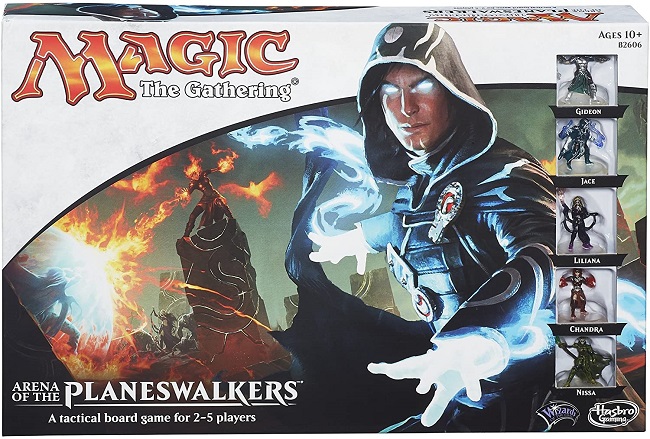
Back when Duels of the Planeswalkers was the best way to play Magic digitally (sorry not sorry, Magic Online) and the Gatewatch didn't yet have a name, the five planeswalkers of Magic Origins starred in a brand new board game called Arena of the Planeswalkers (I'll be using AotP for short). AotP is a turn-based tactical board game based on the popular miniatures war game Heroscape, and published by Wizards of the Coast overlord Hasbro. I will get to what Heroscape was in moment, because it is important to understanding AotP. In AotP, up to five players each take control of a planeswalker, build a deck of twelve cards, and assemble a small army to lead to victory.
This one was one two 'core' AotP products (I'll get into the second later). To play, you would choose a planeswalkers and take the units and cards associated with that walker. While theoretically you could build your own army, you need expansions to be able to do so. The only 'card game' aspect involved in the game was a spell mechanic that used a deck of 12 cards. The spells broke down to Enchantments and Sorceries (also, 'Hidden Enchantments', which are sort-of trap cards) that either affected a unit's stats or simulated a Magic card game effect. Many of these spell cards had the names of actual Magic cards, although they didn't always capture the flavor of the spell they were named after very well. You could cast these spells before you move your units and after you attack (dividing the game into two 'main phases', like Magic'). It added some complexity to a relatively bare bones iteration of Heroscape.

This is a five-player game in action. Fewer players make the battlefield look barren.
The rulebook had a recommended army for each Planeswalker, based on a 500-point system, but if you owned the expansions, you could mix and match the various creatures in your army. Generally, there were three ways to win: be the last player standing with an active planeswalker, have the most points at the end of the last turn (points were accrued by destroying units) or fulfill a scenario-specific victory condition (scenarios were described in the back of the rule book). The game had a limited number of turns based on the number of players, and each turn broke down as follows:
- Draw a Spell Dard.
- Play a Spell Card, Choose a Unit to activate.
- Move the unit you chose. If you chose a planeswalker, you could summon up to two creatures (units) within 5 spaces of you.
- Attack.
- Play Spells and end the turn.
Heroscape
For those of you unfamiliar with Heroscape, it was a modular war game that first came out in 2004. It set itself apart from other miniatures games by having relatively high quality but affordable plastic figures, no randomization (most miniature games at the time followed the booster pack model), and customizable terrain. The game itself played pretty much like Arena of the Planeswalkers (whole swaths of the rulebook are functionally identical between the two games). The two big differences between Heroscape and AotP were that there was no spell deck mechanic and you played your entire army on the field from the start (rather than summoning creatures as you played). Heroscape also relied significantly more on a robust terrain system to create three dimensional environments, where AotP primarily used a 'board' and a handful of terrain pieces to create some slight depth.
Maybe it is not fair to compare the two products, but it is hard not to. The original Heroscape Master Set retailed for around $40, but included 30 painted figures, around 50 terrain hex tiles of various sizes, and two three-dimensional plastic ruins to use as landscape. The base Arena of the Planeswalkers retailed for about $30 and the game included 5 painted figures, 30 unpainted figures, 4 terrain pieces and two cardboard cut-out ruins to use as landscape. That was a huge step down in content and quality.
Then again, production costs were a large part of the reason Heroscape was cancelled. The game started with Hasbro subsidiary Milton Bradley and would later jump to Wizards of the Coast (who made a D&D version) before ultimately being cancelled in 2010. It was expensive to produce that quality of content to sell so cheaply, and the lack of randomization likely meant they were not moving as many expansions.
The reason I've written three paragraphs about Heroscape here is because without Heroscape being cancelled, I wouldn't have gotten as into Magic as I did. Heroscape was a great alternative to more expensive games like Warhammer or random products like HeroClix. When it was cancelled, the discretionary money I had devoted to Heroscape switched to Magic cards... and here we are today.
A fun design note about Arena of the Planeswalkers is that it was originally designed by Ethan Fleischer in R&D, who worked with Craig Van Ness at Hasbro on the design. One day, Ethan asked Craig if he had ever heard of Heroscape, and if he could make the game similar to Heroscape. Ethan was unaware at the time that Craig was, in fact, the creator of Heroscape.
I asked Craig, "Have you ever heard of a game called HeroScape? Can you make it kinda like that?" Of course, AFTER that conversation I googled Craig and discovered that he had been the lead designer of HeroScape. ? Oops. That's the short, short version. 2/2
— Ethan Fleischer (@EthanFleischer) December 6, 2017
AotP - Battle for Zendikar
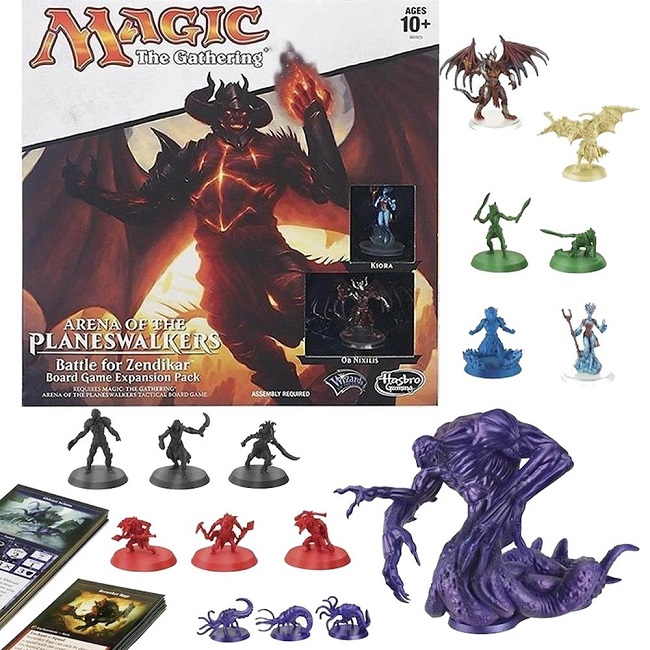
The Battle for Zendikar expansion for AotP added some new features to the game. It included miniatures for both Ob Nixilis and Kiora, along with a slew of Zendikar-themed miniatures. There's not really a lot else to say, as it just added a few things to the game.
AotP - Shadows Over Innistrad
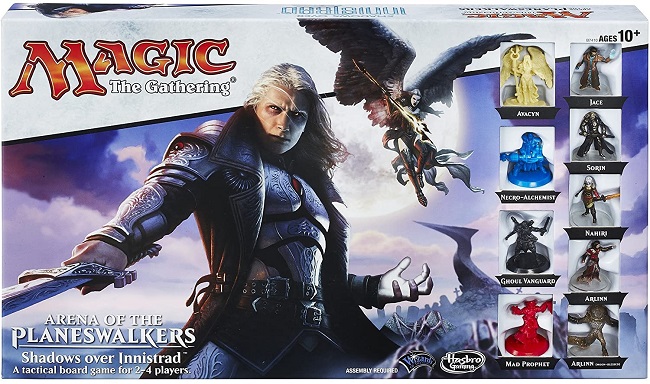
The second 'core' game for AotP was also the last AotP product. It cut the number of playable planeswalkers down from 5 to 4 (although Arlinn Kord had a painted miniature in both of her forms). It also added some much needed terrain complexity in the form of cryptoliths, but ultimately it didn't do well enough to see another iteration. I have a feeling that if these were released around the same time as official Magic-themed D&D books, they might have been much more popular for the affordable miniatures alone.
The Cancelled AotP - Kaladesh
While the product line was cancelled before release, AotP: Shadows Over Innistrad's rulebook hinted at another expansion by talking about artifact creatures... something that hadn't been included in any of the expansions so far. Every time I'm reminded we could have had a Kaladesh-themed AotP (as it was the next Magic expansion), and a Saheeli Rai miniature, I feel a deep well of sadness.
As it was, Kaladesh was the only setting of the Magic: Origins through War of the Spark-era to not get a board game product. As it was my favorite setting of the era, I'll never not be disappointed by that.
Archenemy Nicol Bolas
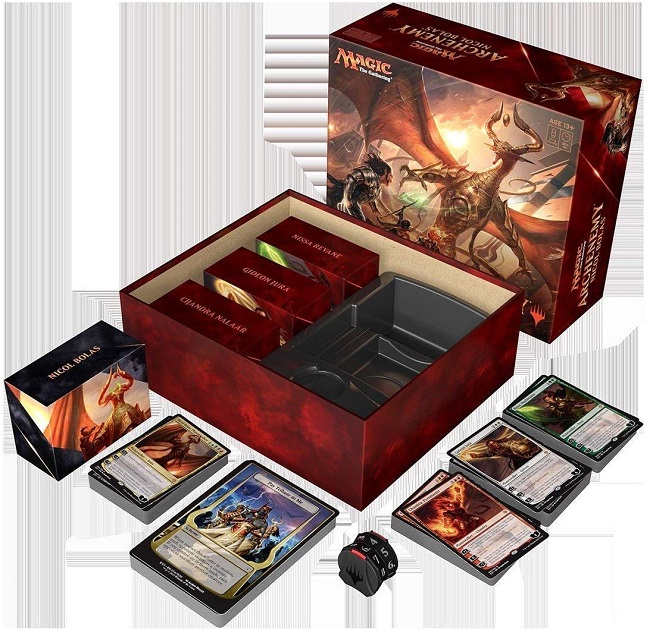
Seven years after the original Archenemy, Wizards of the Coast released Archenemy: Nicol Bolas as a follow-up for Amonkhet. Published by WotC themselves, the big difference was that this time, instead of being sold as individual decks like the original release, it was sold as a multiplayer 'board game'. For those of you not familiar with Archenemy, it introduced an asymmetrical way to play multiplayer Magic, with one player taking on the role of the Archenemy and gaining the powerful Archenemy deck, while the other players team up to stop them. The Gatewatch facing down Nicol Bolas on Amonkhet was a perfect place to revive this format.
It came with four decks, with the Archenemy playing Nicol Bolas, Planeswalker and the others playing Chandra, Pyromaster, Gideon Jura, and Nissa, Worldwaker. While all of the cards could be combined with other Magic products, the design of the game was meant to be a complete experience out of the box. This pick-up-and-play feel is something Magic would return to a few times (especially with an eye toward new player products).
Explorers of Ixalan
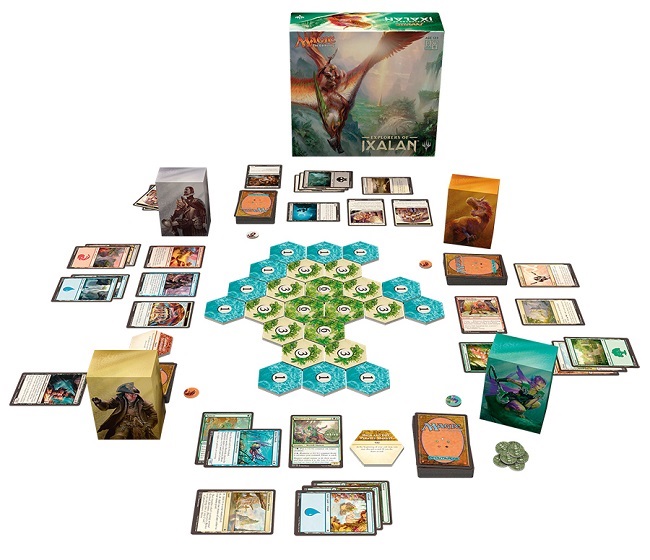
Like Archenemy: Nicol Bolas before it, Explorers of Ixalan was another complete out-of-the-box 'board game' that used regular Magic cards. It pit up to four players, each with a deck themed around the four factions of Ixalan, on a hunt for the lost city of Orazca. Where it differed from its predecessor, however, is that it created a new mechanic in the form of the island tiles you can see in the product photo above. Essentially, each faction would navigate their way into the island by 'buying' tiles (for generic mana costing whatever the number on top was) and receiving the effect on the underside of each. This mechanic ultimately wasn't as well received as say, Planechase, and following this release WotC would focus on a simplified out-of-the-box experience, while partnering with WizKids to produce board games.
Heroes of Dominaria
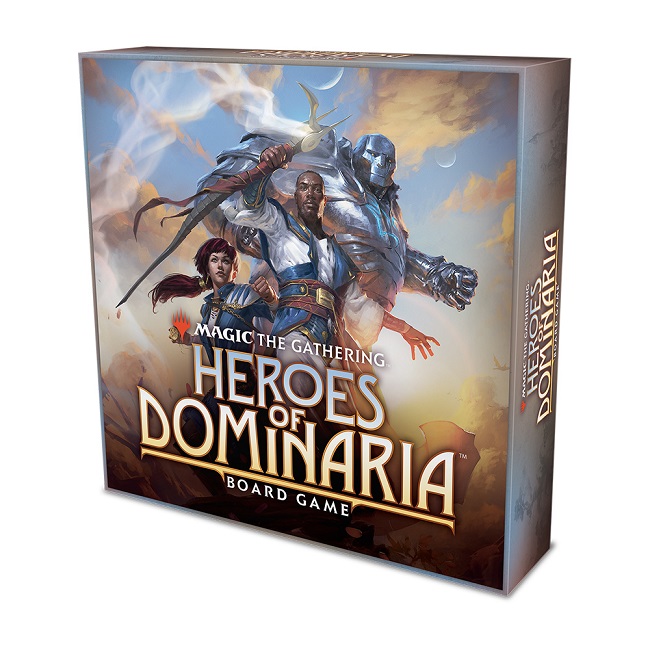
WizKids' first venture into a Magic-themed board game did not go well. While set-up for success being tied to a return to Magic's most iconic setting, the game became notorious in the community for being forgotten about. Why, you might ask? Because it didn't actually release until eight months after Dominaria, and by then Magic fans had moved on. It became a running joke that people forgot the game existed, if they remembered it enough to make the joke at all.
This isn't entirely fair to Heroes of Dominaria, which is a far more polished experience that it gets credit for. It was a perfectly fine worker-placement-style Eurogame, with some really slick miniatures that came painted very well if you bought the 'premium edition'.
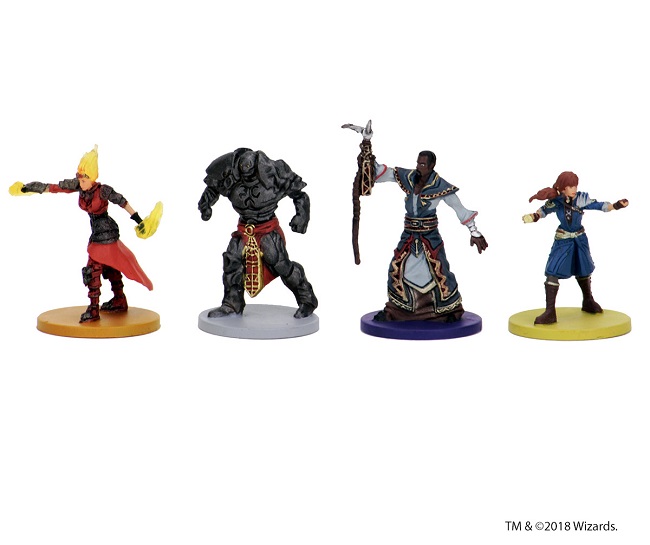
The above photo doesn't really do it justice, but compared to the paint jobs on WizKids' lines of MTG D&D miniatures and the AotP miniatures, these four painted minis are really in a class of their own. When I realized this game was going for a fraction of its original price, I snatched up the premium edition quickly and was pleasantly surprised with the quality of it.
Hey, these are actually hecking cool. I wish Chandra had been Jaya though, my Arena of the Planeswalker's sets already had a Chandra mini. pic.twitter.com/Nv8ixmxhmL
— Jay Annelli (@jay13x) August 19, 2020
If you can find it at a reasonable price, I recommend picking it up for these minis alone.
Game Night
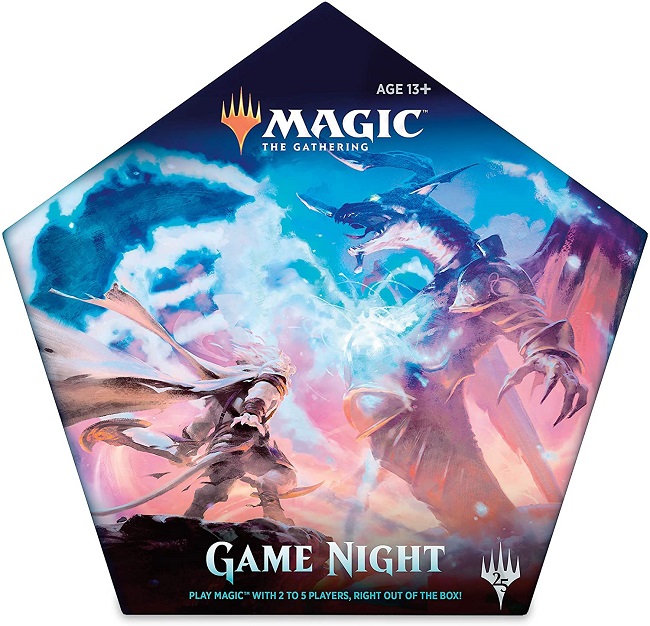
Game Night took the out-of-the-box concept from Archenemy: Nicol Bolas and Explorers of Ixalan and simplified it. Intended to be a new player product, or a product with a group that isn't on the same footing in Magic can all sit down and play together. It featured five mono-colored decks with spindown life counters.
Ravnica: Inquisition
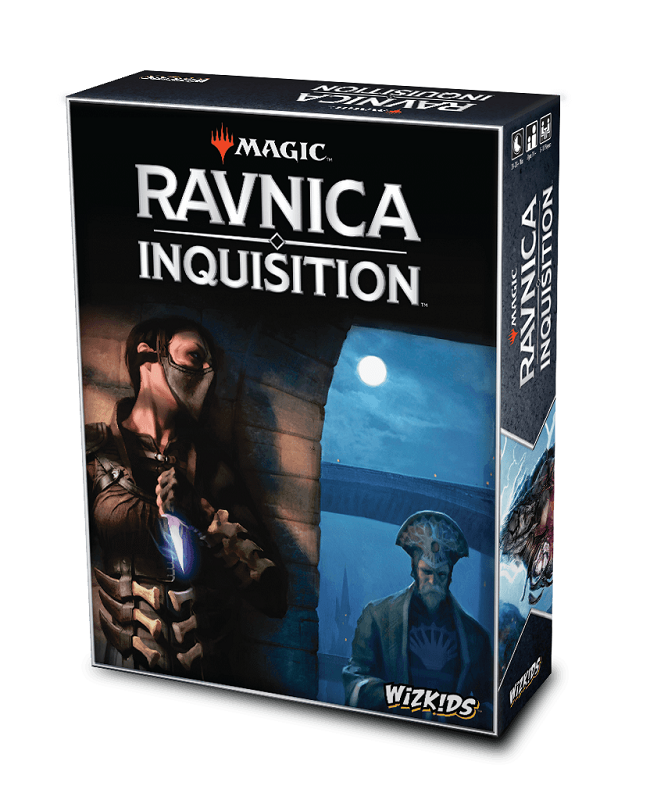
Ravnica Inquisition uses the cold war themes of Guilds of Ravnica and Ravnica Allegiance to create a Werewolf-style card game. The game itself should be fairly familiar to anyone who has played a Mafia or Werewolf game, it's a hidden role game of social deduction, with an MTG theme. Unfortunately, it also wasn't much of a success, given it didn't deviate much from that general formula and that it generally got lost in the shuffle.
Game Night 2019
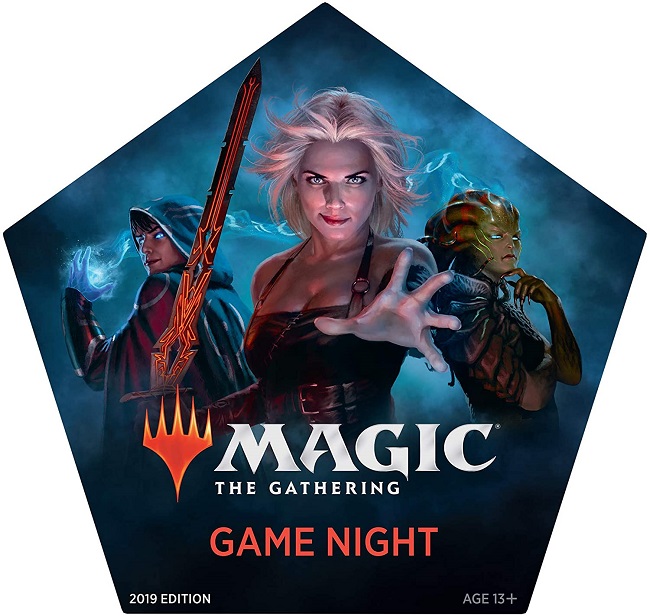
The original Game Night was a success, and was brought back around for 2019! It featured another five mono-colored decks, different from the previous year. There's not really a lot else to say about it other than we haven't heard one announced for 2020 yet, but given the global pandemic they might be delaying such a release until next year.
Unsanctioned
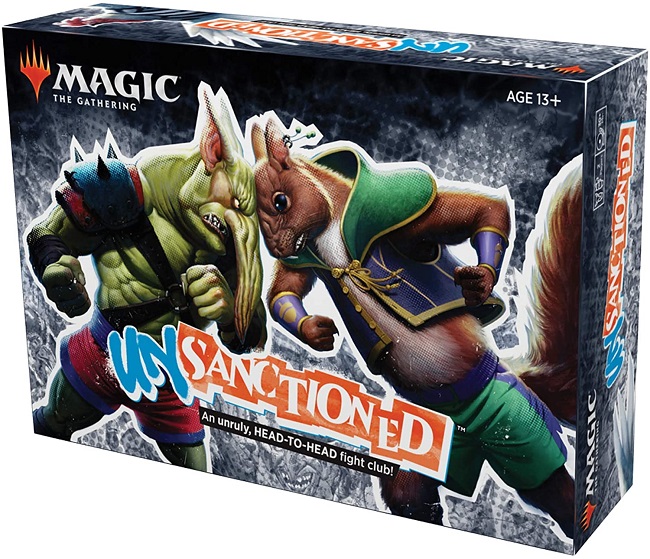
The most recent product is also one of the coolest ideas. In a very Smash Up move, Unsanctioned provides five mono-colored mini-decks of which you pick two to combine into a single deck. It's a pick-up and play two-players product aimed at more enfranchised players, but it pairs nicely with other Un-products (like Unstable). We learned later about Jumpstart, the black-bordered 'draft' version of this basic premise.
Next Time
As preview season passes, I'll look at the flavor gems of Zendikar Rising!























